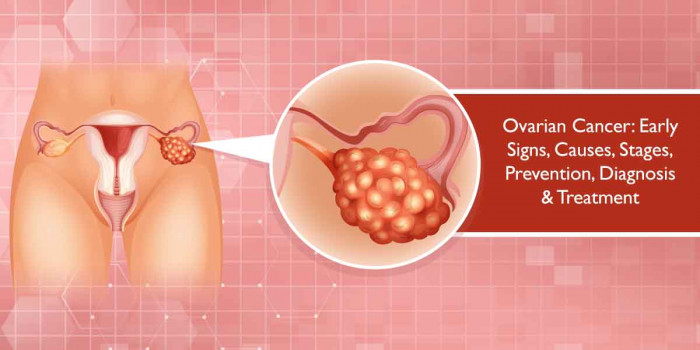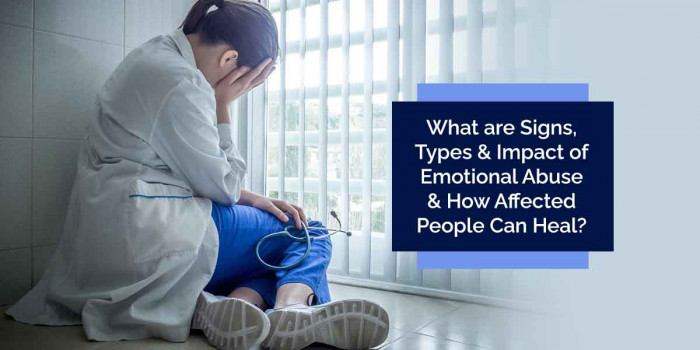Identifying the Ovarian Cancer and How it Can Be Treated
Ovarian cancer is a type of cancer that occurs in women in different body parts of the body. Know about the signs & symptoms, causes, diagnosis, prevention, and treatment here.

Did you know that almost 50% of cases of ovarian cancer occur in women who are more than 63 years old? You may have heard that ovarian cancer is a silent killer, but some early signs can help prevent it from spreading in other body parts. A few of the earliest symptoms are simple to identify for both people suffering from cancer and the doctors.
Read on here about the signs & symptoms, causes, diagnosis, prevention, and treatment of ovarian cancer.
Signs & Symptoms
Some early signs of Ovarian Cancer:
- Abdominal swelling, pressure, or pain
- Weight loss
- Irritable bowel syndrome
- Trouble eating or quickly feeling full when eating
- A frequent need to urinate (always feeling like you have to go or having to go often)
- Constipation, abdominal distension, bloating, indigestion
- Discomfort or pain in the pelvis area
- Ovarian borderline tumors or also known as low malignant potential (LMP) ovarian tumors
Other symptoms may include:
- Back pain
- Fatigue
- Pain during sex
- Upset stomach
- Diarrhea
- Nausea
- Heartburn
- Urinary symptoms
- Appetite loss
- Menstrual cycle changes
If you have one or more of these symptoms, that doesn’t mean you have cancer. These symptoms are not limited to Ovarian Cancer.
Later stage symptoms:
- Ovarian torsion
- Metastases that can cause Sister Mary Joseph nodule
- Teratoma that can cause growing teratoma syndrome or peritoneal gliomatosis
- Menometrorrhagia
- Hirsutism
- Adnexal mass
- Virilization
- Abnormal vaginal bleeding
As a fact, numerous women have some of these problems at one time or another. However, consult your gynecologist for a physical checkup if you have several of these signs repetitively during a single month or if they continue.
Stages of Cancer
The four stages of cancer are:
- Stage 1 occurs in one or both ovaries.
- Stage 2 occurs in the pelvis.
- Stage 3 spreads into the abdomen.
- Stage 4 spreads outside the abdomen or into other solid organs.
These stages are determined by the size of the tumor, how much cancer spread to other body areas, the tumor’s invasion in the ovary, or nearby tissue.
Causes & Risk Factors
The exact cause of ovarian cancer is not known. The risk factors include:
- Increased age
- A longer period of early menstruation or late menopause poses a high risk
- People who have not borne children have a doubled risk
- Not having children are at a higher risk
- Pregnancy at an early age, multiple pregnancies, oral contraceptives, breastfeeding, fewer or no menstrual cycles pose a lower risk
- Hormonal conditions like polycystic ovary syndrome and endometriosis are at a higher risk
- Family history of endometrial cancer, colon cancer, or other gastrointestinal cancers are at a higher risk
- Environmental factors - Caucasians are at a 30-40% higher risk than Black or Hispanics
- Smoking, low Vitamin D levels, BMI of over 30, higher levels of C-reactive protein pose a higher risk
Diagnosis
The diagnosis of ovarian cancer requires medical history and physical examination. One or multiple blood tests are also needed to diagnose the condition. An annual pap smear test may not be able to detect it.
The following tests are conducted:
- Test for complete blood count
- Test for inhibin, estrogen, and testosterone levels to check its elevated levels for stromal cell tumor
- Test for HCG levels that elevate in case of germ cell tumor
- Liver function tests to check the amount of cancer spread
- Test for cancer antigen 125 levels to check if it is elevated
- Kidney function tests to check if cancer blocked the urine flow or spread to the bladder or kidneys
- Test for alpha-fetoprotein that is produced in case of germ cell tumor
- Test for lactate dehydrogenase levels to check if it is elevated (germ cell tumor)
Various types of Imaging tests like CT scan, MRI, or PET scan are done to check for changes in ovaries and other organs that may be affected by cancer.
To check for metastasis, urinalysis (check for infection or blood in urine), chest X-ray (check for tumor spread in lungs), and barium enema (check for tumor spread in the colon) can be done. Also, regular ovarian screenings are not recommended.
Preventions
The ways of preventing ovarian cancer include:
- Breastfeeding
- Taking birth control pills
- Hysterectomy
- Tubal ligation
- Having given birth
Treatment
The treatment of ovarian cancer depends on the stage, type, and whether you want children in the future. Surgery, advanced ovarian cancer surgery, and chemotherapy are some of the common treatment methods.
Concluding Thoughts
Ovarian cancer can even cause death if it reaches the last stage. So it is better to take possible precautions and seek medical guidance if early symptoms are seen.
Popular Posts
10 Amazing Lessons You Should Learn From Mr Olympia Jeremy Buendia
Jeremy Buendia is an fitness inspiration for people from all over the world, there is a reason why he has been so successful at what he has been doing. Don’t look for the reasons take some lessons from the fitness sensation right here, that can change your lives.
Ethan Stephans
Why Are Pubic Hair Thicker Than Body Hair?
As children we always had several questions about our bodies, which were alien to us, this post is to serve a decade-long curiosity of young boys/girls about their pubic hair and its texture.
Augustus Perez
7 Sleeping Tips That Every Woman Should Follow During Pregnancy
Pregnancy is not easy. Pregnant women experience a lot of changes in their bodies, like increased stomach size, frequent urination, and sleeping discomfort.
Still Unfold








